- August 14, 2024
How students of three well-known dance schools in Chennai came together to celebrate Shakti
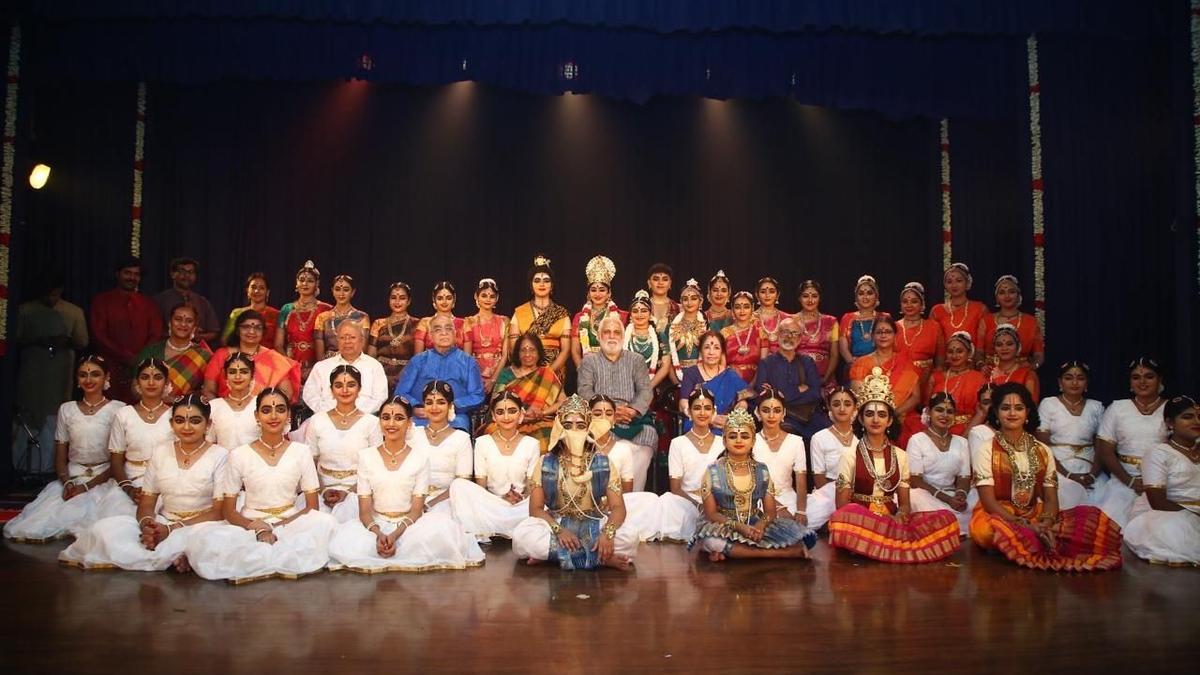
Three miniature dance dramas unfolded in quick succession at the Aadi Natya Samarpanam, held under the aegis of Bharatiya Vidya Bhavan, Mylapore. The well-curated works, celebrating the Tamil month of Aadi, were an outcome of the coming together of creative minds.
Deepa Ganesh, artistic director, Upasana, brought together three senior teachers — Sheela Unnikrishnan, Jayanthi Subramaniam and Anita Guha — hailing from different lineages, to present a colourful garland for the goddess in her varying forms.
Deepa’s arduous research, under the guidance of Tamil scholar S. Raghuraman, seamlessly unravelled the intricacies of the art form as if one took a time travel from the interiors of Tamil Nadu to its stylistic urbanised form and presentation.
Sridevi Nrithyalaya’s Aadi Aasarippu performed at Bharatiya Vidya Bhavan’s Aadi Natya Samarpanam.
| Photo Credit:
SDN’s Insta handle
A charming group of dancers from Sheela Unnikrishnan’s Sridevi Nrithyalaya presented ‘Aadi Aasarippu’ as an ode to Shakti. The costumes, and the props used established a rural flavour. Particularly, the recorded music, transported one to a Amman temple in a village.
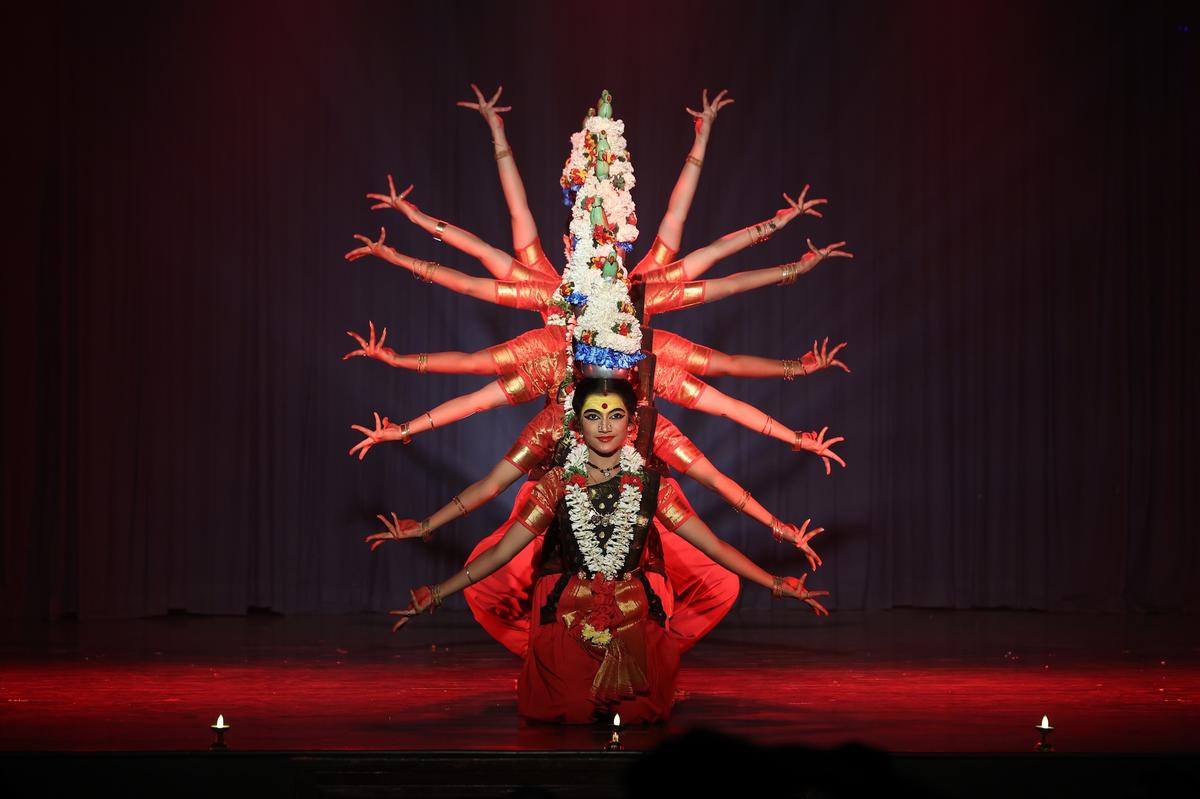
Karagattam performed by the students of Sridevi Nrithyalaya.
| Photo Credit:
SDN’s Social Media page
While the folk dance Kummi ushered in the Aadi celebrations, the dancers concluded their performance with Karagatam. Despite a few slips in the group patterns, the rigorous training and practice were evident in the presentation. Both the Kavuthuvam and the edited version of Andal’s union with her lord lent a perfect start to the evening.
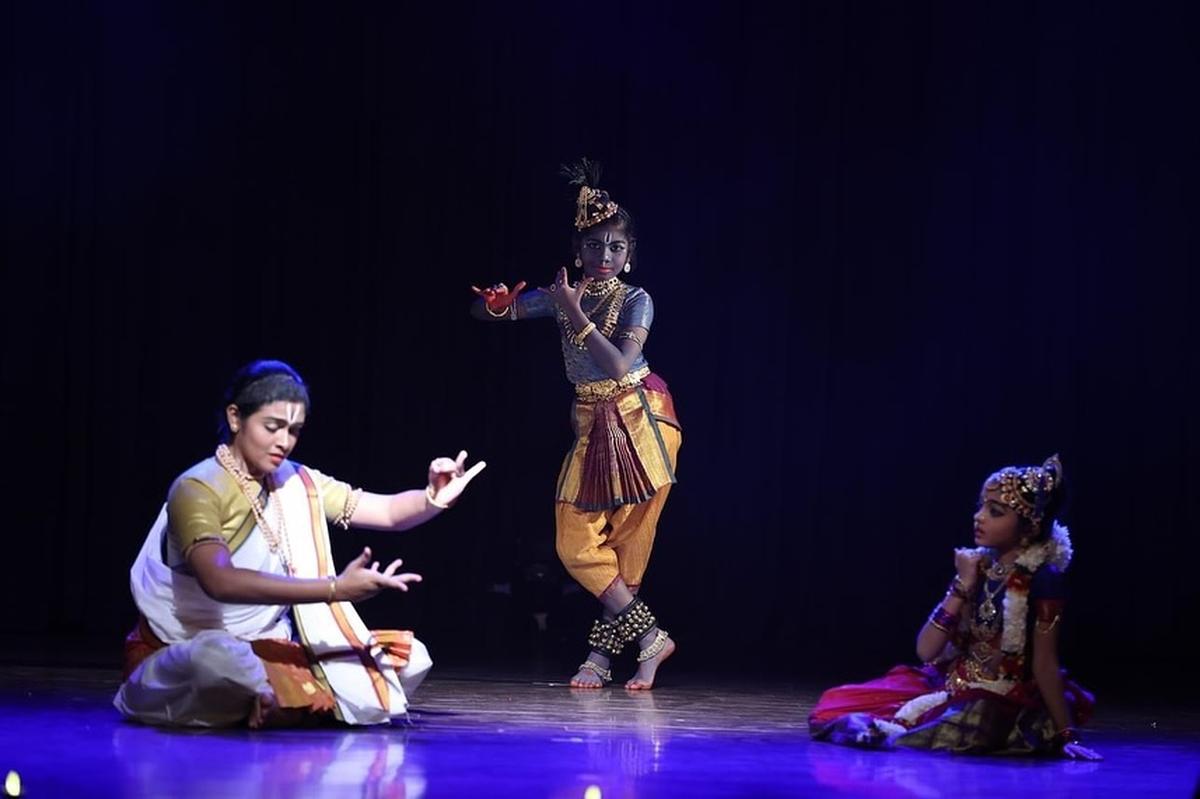
The segments leading to Andal’s union with Krishna were well-conceived.
| Photo Credit:
SDN’s Social Media page
Well-executed theme
Classicism marked the presentation by the students of Jayanthi Subramaniam.
‘The Goddess Across Time’ showcased Her glory from the Sangam period to Meenakshi Pillai Tamizh (17th century). The choreography eulogised Devi’s power, bravery, and victorious trail. Warfare and weaponry were strikingly portrayed through vibrant rhythm, deftly played by mridangist M.S. Sukhi.
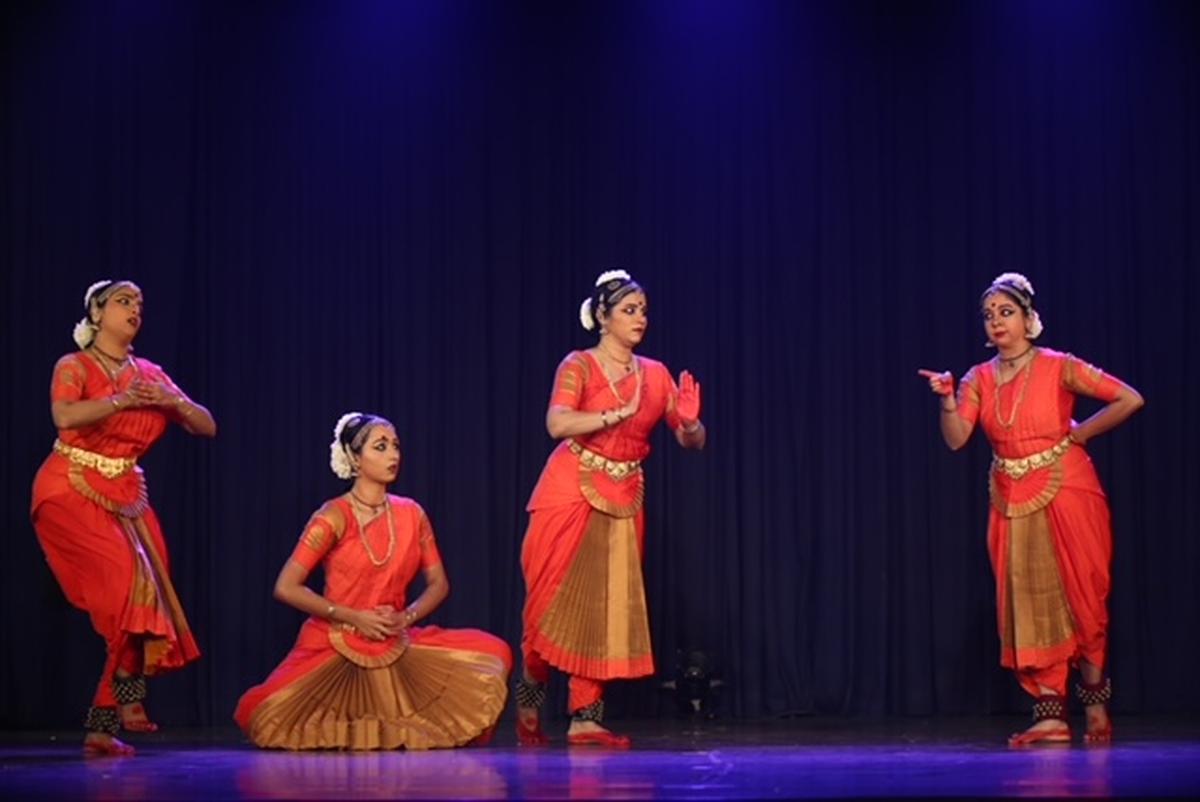
Jayanti Subramaniam’s ‘The Goddess Across Time’ performed at Upasana’s ‘Aadi Natya Samarpanam’.
| Photo Credit:
Special Arrangement
Nandini Anand Sharma’s musical compositions and renditions for the ‘Kotravai vazhipadu’ recreated the heroic era of the Goddess. Jayanthi’s strength clearly showed in her nattuvangam.
In stark contrast came the soothing ‘Ambulipparuvam’, where the mother beckons the moon to come and play with her child. ‘Chaturupayas’, or the four approaches of Sama, Dana, Bheda, Danda were well-depicted by the four dancers in turns. A personal observation is that while the moon’s position was steadily registered through the mukhabhinaya, the continued communication with the fixed drishti could have had intervening shifts. Though the essence of the composition came through, gentle nritta segments would have enhanced the impact.
Nandini Anand Sharma’s choice of ragas was apt for the mood that was gradually built to coax the moon. The choice of Yamuna Kalyani was a fitting start. Jayanthi Subramaniam’s abhinaya training needs to be lauded
The performance highlighted how history and literature can be explored through the medium of dance.
Powerful narrative
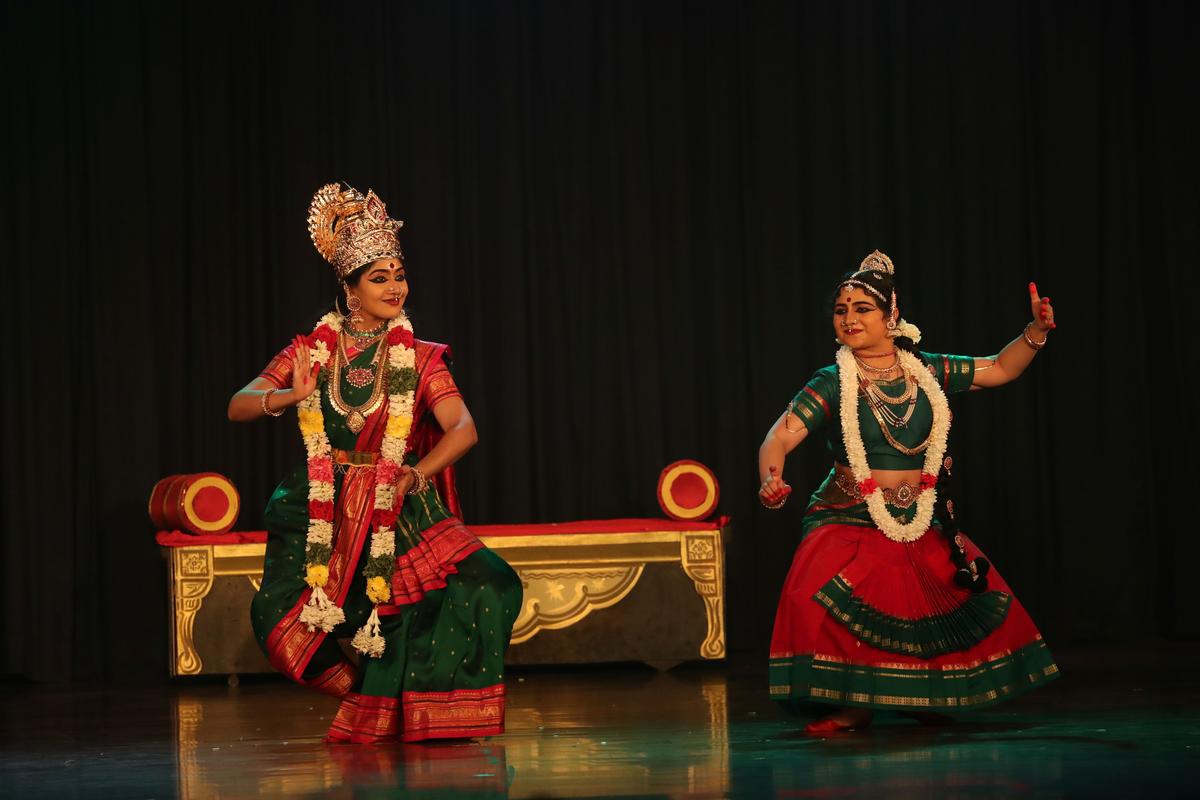
From the dance production ‘Sri Bala Tripurasundari’
| Photo Credit:
Bharatiya Vidya Bhavan
The dramatic shift to ‘Sri Bala Tirupurasundari’ by Anita Guha, who specialises in the traditional dance drama format, offered a glimpse of the Goddess’ power. Researching Lalitha Mahatmyam and other relevant texts, Anita came up with a compelling narrative.
Vigorous nritta passages were conceived to suit the episodes. Depiction of the hamsam carrying the child goddess and a variety of formations venerating her were the high points.
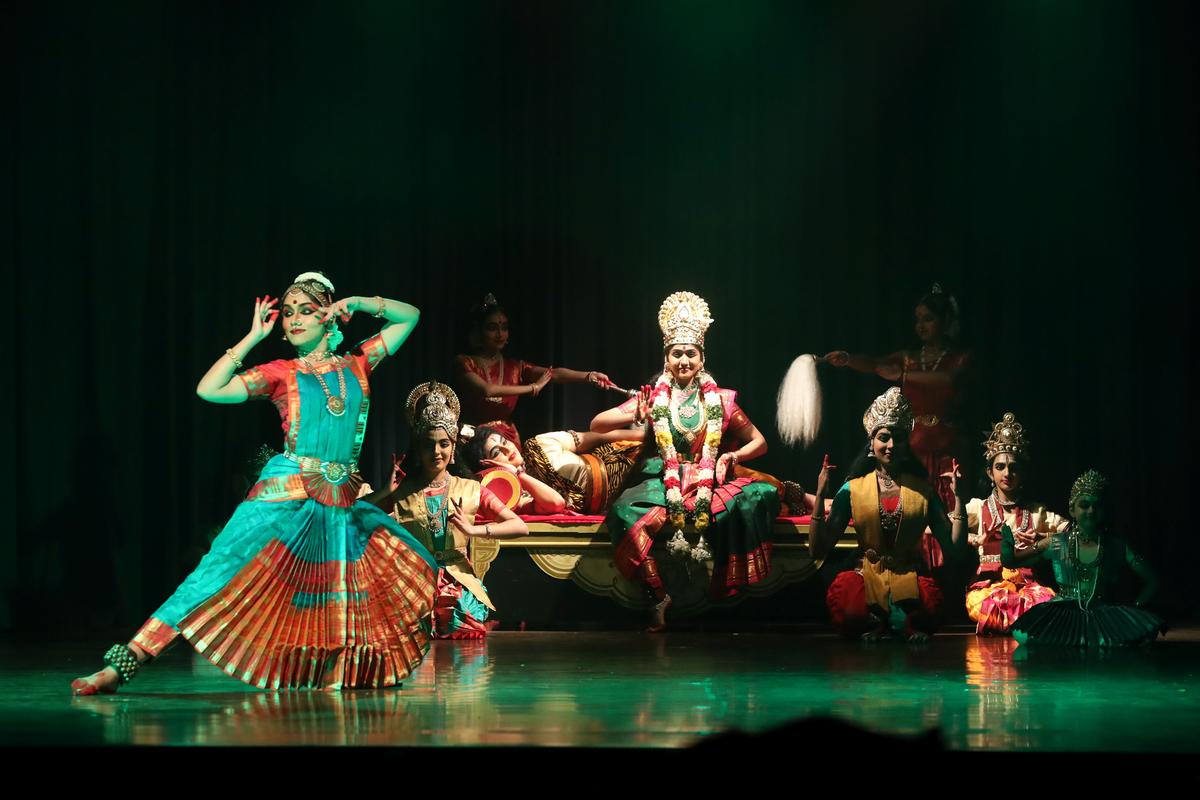
‘Sri Bala Tripurasundari’ was an ode to Shakti.
| Photo Credit:
Courtesy: Bharatiya Vidya Bhavan
P.R. Venkatasubramanian was the man behind the music ensemble. An integral part of Anita’s productions, his support has been immense.
Anita skill in presenting the story in a concise manner with her large entourage of dancers getting equal stage space needs a special mention.
Segments such as celebrating the Goddess in the form of a child and a mother’s angst in ‘Sri Rajarajeshwari’ while allowing Sri Bala to fight Bhandasura were well-established. However, the tonal shifts during the battlefield scene was jarring.
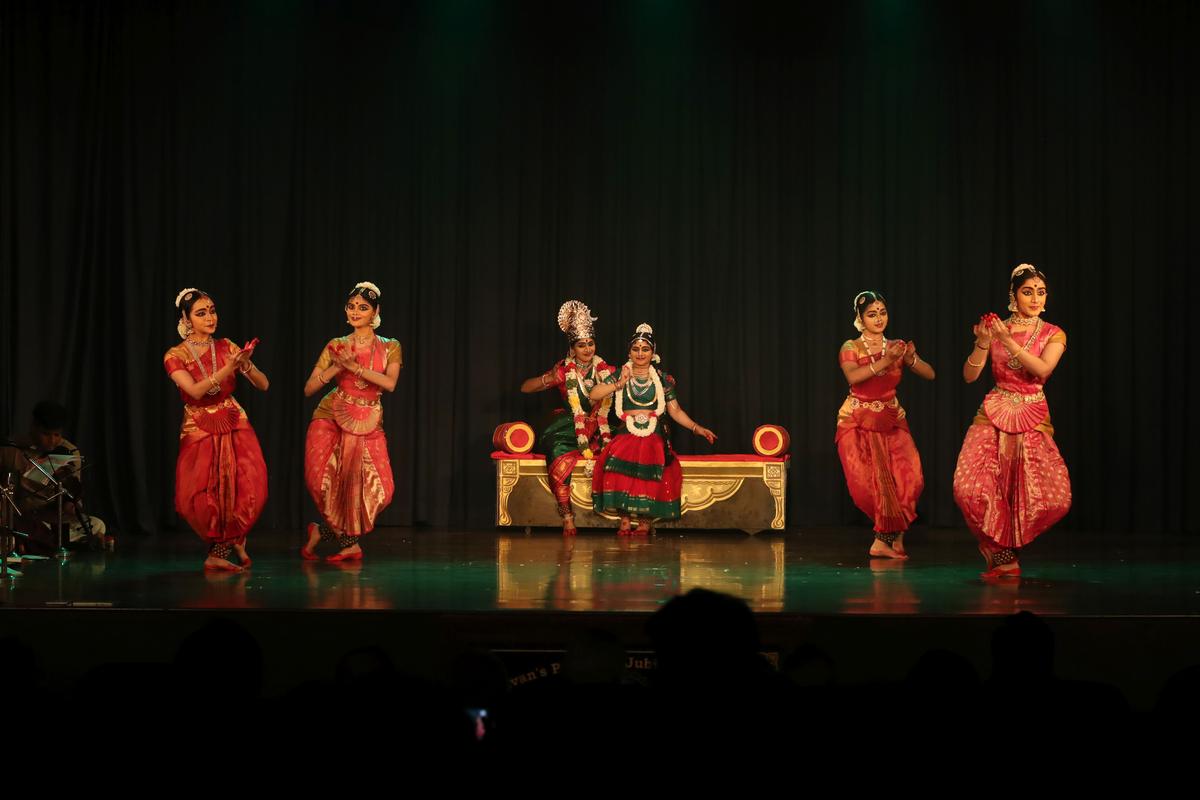
Musical score and the lighting enhanced the appeal.
| Photo Credit:
Courtesy: Bharatiya Vidya Bhavan
The lighting was subdued as Sri Bala Tirupurasundari emerged as the divine light!
Violinist Vishwesh’s fluid bowing and young flautist Adwaith’s melodious playing in Jayanthi’s and Anita’s presentations deserve to be complimented.
Aadi Natya Samarpanam drove home the point that any celebration is incomplete without art as it establishes a connect between the world and the inner self.




